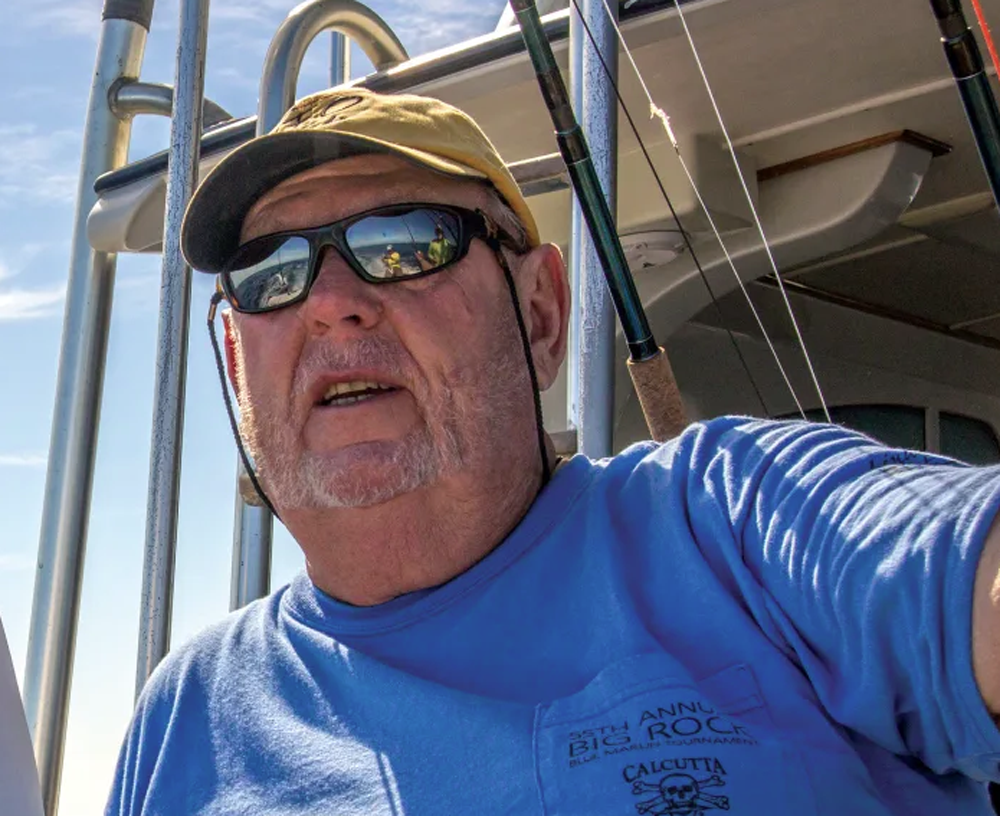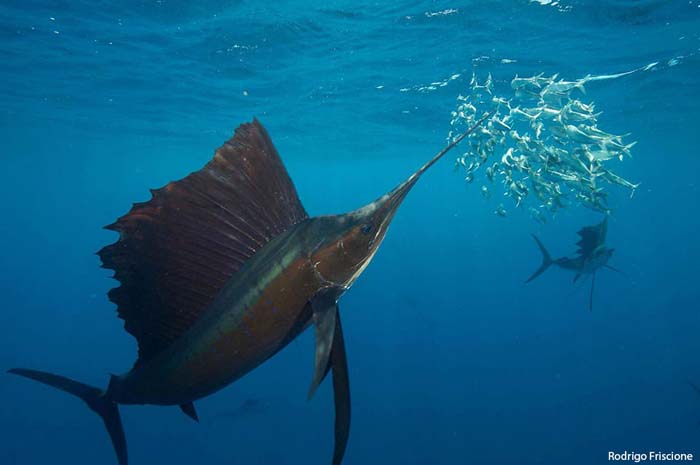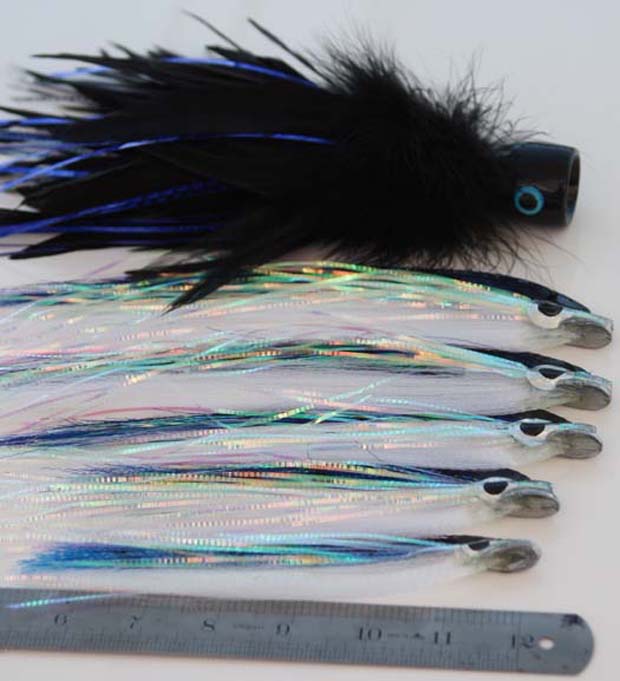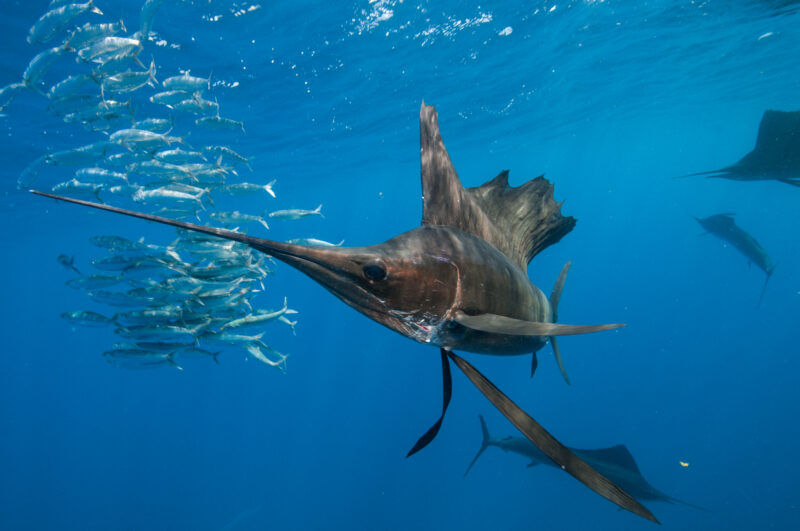
Jake Jordan, the Iron Man, is a trailblazer in fly fishing catching, and you might not know who he is. He only fishes for tarpon at night in the Florida Keys. He figured out how to catch billfish by making the rod and reel do all the work, and he never gets skunked. And that the fly reel has to be a Mako. Photo: Brian Horsley.
The sailfish is very much a target species for the anglers that have a habit of destination spending
By Skip Clement
The history of fly fishing for big game is yet to be written. The list of names that keep billfish on their minds is as few as there are international rankings for Court Tennis Players, a game of tennis you would recognize by the net, ball, and racquet. What would be puzzling is that it’s played in a replication of a castle courtyard. Therefore, the roof and a wall are in play. Its world players are numbered in the handfuls.
Fly fishers who dedicate their fishing experiences to catching billfish on a fly comply with the International Game Fish Association [IGFA] rules. That makes catching billfish all the more difficult. For example, the bite guard can only be 12-inches long, and the pound test limit is 20-pounds.
‘First I believe that catching blue marlin on fly is a team sport, responsibilities divided equally between the tackle, the captain, the mates (teaser man), and the angler. No Blue marlin will be caught on fly if one of these elements fail.’ — Jake Jordan
‘Until 2013, we used to catch one blue marlin from every 10 bites, and for many years we would not cast flies to marlin over 200 pounds. Since 2013, we have averaged catching better than 40-percent of the blue marlin that eat our flies. As of today, I have caught and released as a fly angler 51 blue marlin, while my clients/students have caught and released 131 (during the last five years) while attending my Blue Marlin Fly Fishing Schools.
—Jake Jordan
Mexico, Yucatan, Isla Mujeres, Caribbean Sea, Indo-Pacific sailfishes, Istiophorus platypterus. Envato image.
All Tackle IGFA marlin world records:
All Tackle Black Marlin ~ 1,560 lbs – Peru, August, 1953
All Tackle Blue Marlin [Atlantic] ~ 1,402 lbs 2 oz – Brazil, February, 1992
All Tackle Blue Marlin [Pacific] ~ 1,376 lbs – Kona, Hawaii, May, 1982
All Tackle Striped Marlin ~ 494 lbs – Tutukaka, New Zealand, January, 1986
All Tackle White Marlin ~ 181 lbs 14 oz – Brazil, December, 1979
All Tackle IGFA sailfish world records:
All Tackle Sailfish [Atlantic] ~ 141 lbs 6 oz – Angola, March, 2014
All Tackle Sailfish [Pacific] ~ 221 lbs – Santa Cruz Island, Ecuador, February, 1947
Fly Fishing IGFA marlin world records:
Fly Fishing IGFA Black Marlin ~ 222 lbs 10 oz / 20-pound test – NSW Australia, March, 1998
Fly Fishing IGFA Blue Marlin [Atlantic] ~ 260 lbs / 16-pound test – Mindelo, Cape Verde, May, 2012
Fly Fishing IGFA Blue Marlin [Pacific] ~ 288 lbs 12 oz / 16-pound test – Port Stephens, Australia, March, 2002
Fly Fishing IGFA Striped Marlin ~ 240 lbs 15 oz / 20-pound test – Whangaroa, New Zealand, March, 2013
Fly Fishing IGFA White Marlin ~ 120 lbs / 20-pound test – Morocco, September, 2004
Fly Fishing IGFA sailfish world records:
Fly Fishing IGFA Sailfish [Atlantic] ~ 113 lbs / 20-pound test – Lobito, Angola, March, 2020
Fly Fishing IGFA Sailfish [Pacific] ~ 136 lbs / 12-pound test – Pinas Bay, Panama, June, 1965
From the mid-1980s to the early 1990s, I owned three Sage RPLs bought at different stages of their run. The 10-weight was my favorite. It had collected king salmon in Alaska, Atlantic salmon in Iceland, peacocks in the Orinoco River tributaries, tarpon by the score in Costa Rica, lost a sailfish in Panama, and itself on a flight from Miami to Belize. The other two got relieved of my abusive ownership by garage break-in theft in Ketchum, Idaho.
The ten was the best big animal fly rod I ever owned. I wish they still made it. It could turn and lift a building
The Panama sail was around 125-pounds, according to Alejandro, our barely English-speaking captain/guide, while fishing Pinas Bay for a week in 1987. I had tied a foam slob fly (not the name, but a reference to my sloppy tie) with white feathers – I cannot recall the hook size except is was saltwater rated. I wasn’t fishing it for any designed purpose – just “surfing” what would interest it.
Eddie and I chummed the sail up, without intent, using crippled bonito we had easily harvested on a fly – maybe a dozen in 20 minutes… give or take.
The sail followed and then lost interest in the fly. After casting half a dozen times and letting the fly sit near the bonito. Why did it refuse? All that attention and no bite? Alejandro had been screeching tirón, tirón, tirón – with reception finally coming when he used the charade of pulling. OK, a new try. Él ha enganchado!
The sail took off, running at what seemed to be Indy 500 speed, leaping along the way with its entire body out of the water. The sun angle was perfect, the fish not 30-yards away, and the colors from another planetary system – spectacular. How many leaps? And then, off.
My hands were a bloody mess – the old Pflueger reel of no use. It should have been sent to a rest home years ago.
On the last day, I was bandaged but in the game. No sailfish, but a couple of roosters in the 20-pound class, another speed merchant – sore hand issues included.

Sailfish hunting sardines in the open ocean off the coast of Mexico. IGFA Istiophorus platypterus, the fastest fish in the world – 68 mph. A NOAA image – public domain. Photo taken by Rodrigo Friscione.
So, what do the National Oceanic and Atmospheric Administration’s National Ocean Service say is the fastest fish in the ocean?
That would be a fish clocked at speeds up to 70 mph – some experts consider the sailfish (Istiophorus platytypterus – Atlantic and Pacific) the fastest fish in the ocean. Easily recognized, sailfish are named for the spectacular sail-like dorsal fin extending nearly the entire length of their silver-blue body. Additionally, the sailfish’s upper jaw is far longer than its lower jaw, forming a distinctive bill that looks like – and sometimes acts like a spear.
Often working together in groups of two or more, swift sailfish thrash at and disrupt schools of smaller fish, such as sardines and anchovies, thus allowing each sailfish to snag its meals easily. The sailfish’s spear-like bill also comes in handy for slashing at larger prey fish, which stuns them into submission. Together, sailfish engage their huge dorsal fins, creating a fence around their prey to prevent their victims from escaping their clutches.

Capt. Joe Kononchik, master fly tyer, holding billfish “Filet Mignon’s.” For years, Joe tied all of Capt. George Sawley’s billfish flies—photo Clement.
Sailfish are billfish, including marlins, swordfish, and round-scale spearfish. Billfish are pelagic and prefer the warmer waters of the Atlantic and Pacific. They are often found in groups, feeding on smaller fish, crustaceans, and cephalopods (octopus, squid, and cuttlefish).
Though popular with sports anglers, sailfish cannot be taken commercially in U.S. waters except as incidental catch in Pacific longlines and gillnet fisheries. Possession of sailfish is prohibited on commercial fishing vessels in the Atlantic.
Sources: National Ocean Service / National Oceanic and Atmospheric Administration / Department of Commerce, International Game Fish Association.



